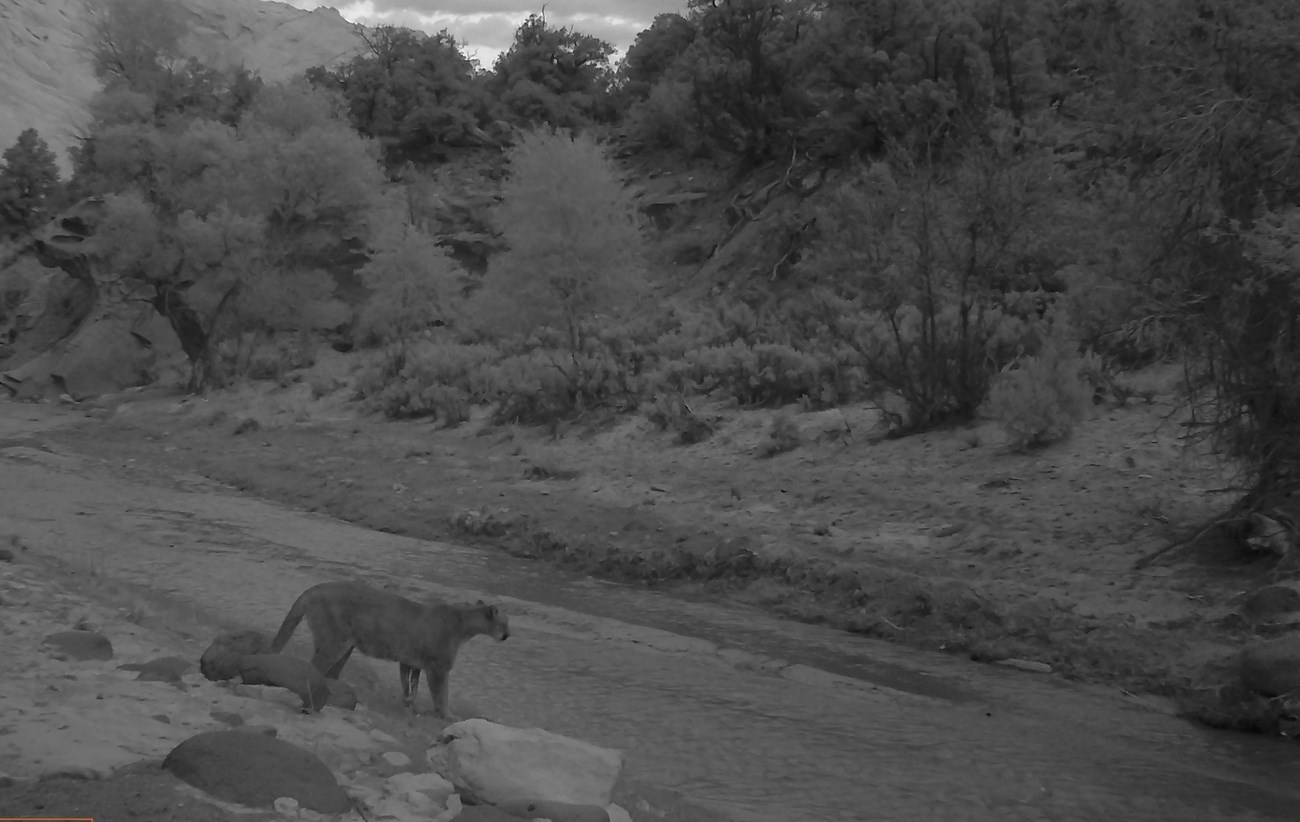Last updated: March 27, 2020
Article
Mountain Lion Safety

NPS
Mountain lions (Puma concolor) are also called cougars, pumas, panthers, and catamounts. They roam throughout this area in both desert and mountain country, and are usually quiet and elusive. Although your chances of seeing one of these secretive animals is slight, people sometimes encounter them. Typically, mountain lion sightings occur from a distance and usually around dawn or dusk. However, lions are unpredictable and can be dangerous.
Mountain lions are solitary animals, traveling alone except during mating season or when a female is supporting young. They can be seen at any time of the day or night, but are most active at dawn and dusk, corresponding with deer activity.
Mountain lions are carnivores (meat eaters) and prey mostly on deer. They also eat small animals like porcupines, rabbits, squirrels, marmots, and skunks.
Do not feed deer. Feeding deer encourages them to remain in close proximity to humans. Keep the wild in wildlife! Avoid carcasses as mountain lions will occasionally return to their kills to feed over several days. Do not leave pets outside at night.
Follow these guidelines to stay safe:
-
Do not jog or hike alone. Go in groups with adults supervising children.
-
Keep children close to you. Do not allow children to play along river banks, in heavy vegetation, or alone at dawn or dusk. When hiking with children, watch them closely and never let them run ahead of you. Observations of captured wild mountain lions reveal that the animals seem especially drawn to children.
If you encounter a lion, remember the goals are to convince it that you are not prey and that you may be dangerous. Follow these safety tips:
-
Do not approach a lion. Most mountain lions will try to avoid a confrontation. Give them a way to escape.
-
Do not run from a lion. Running may stimulate a mountain lion's instinct to chase. Instead, stand and face the animal. Make eye contact. If you have small children with you, pick them up if possible so that they don't panic and run. Although it may be awkward, pick them up without bending over or turning away from the mountain lion.
-
Do not crouch down or bend over. A human standing up is just not the right shape for a lion's prey. Conversely, a person squatting or bending over resembles a four-legged prey animal. In mountain lion country, avoid squatting, crouching or bending over, even when picking up children.
-
Do all you can to appear larger. Raise your arms. Open your jacket if you are wearing one. Again, pick up small children. Throw stones, branches, or whatever you can reach without crouching or turning your back. Wave your arms slowly and speak firmly in a loud voice. The idea is to convince the mountain lion that you are not prey and that you may be a danger to it.
-
Fight back if attacked. A hiker in southern California used a rock to fend off a mountain lion that was attacking his son. Others have fought back successfully with sticks, caps, jackets, garden tools and their bare hands. Since a mountain lion usually tries to bite the head or neck, try to remain standing and face the attacking animal.
Please report all mountain lion sightings to a park ranger.
